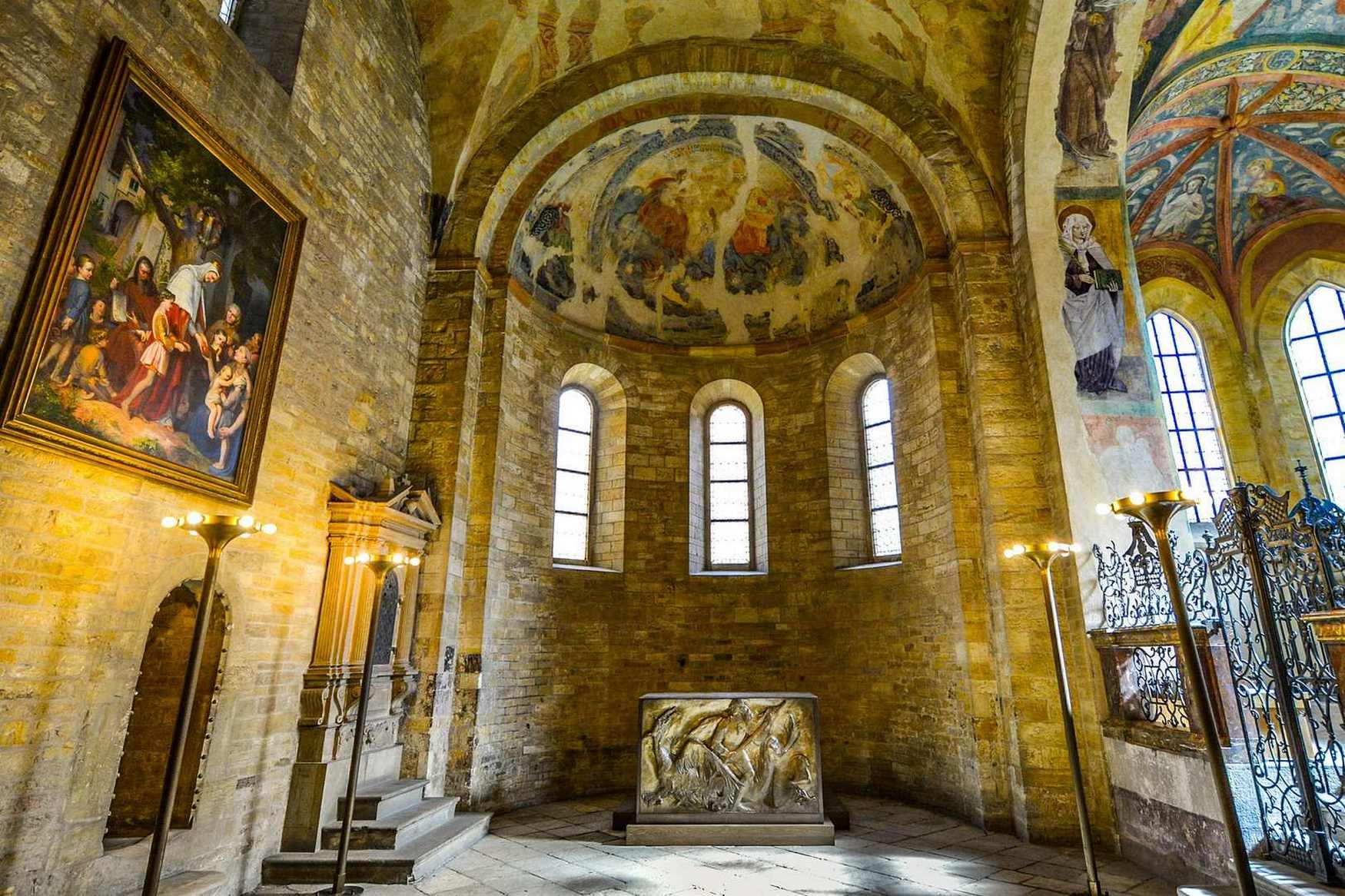- Why is St George Basilica so Famous?
- Why It Might Be Interesting for Kids
- Some interesting facts about the Basilica of St George
- Historical Background
- Architectural Features
- Religious and Cultural Importance
- Art and Exhibitions
- Best Time to Visit
- How Long Does It Take to Visit St. George's Basilica?
- Is St George's Basilica Worth Visiting?
Nestled within the storied walls of the Prague Castle Complex, St. George's Basilica (Bazilika sv. Jiří) stands as a beacon of history and architectural beauty, offering families a fascinating glimpse into medieval Prague. Regarded as the second oldest church in one of Europe's most enchanting cities, the Basilica is a testament to Prague's rich past, with origins dating back to the 10th century. This Romanesque landmark invites visitors of all ages to explore its serene interiors, adorned with art and echoing with tales of the Benedictine nuns who have long been its custodians.
There are many reasons to visit St George's Basilica. For young explorers and their families, visiting this historical place is a journey through time. The vibrant frescoes and the quiet grandeur of the church provide an educational and awe-inspiring experience, perfect for igniting children's interest in history and art. As part of the Prague Castle Complex, it is an essential chapter in the narrative of this historic city, allowing visitors to combine a day of adventure with an enriching cultural lesson beyond the classroom.
Contents
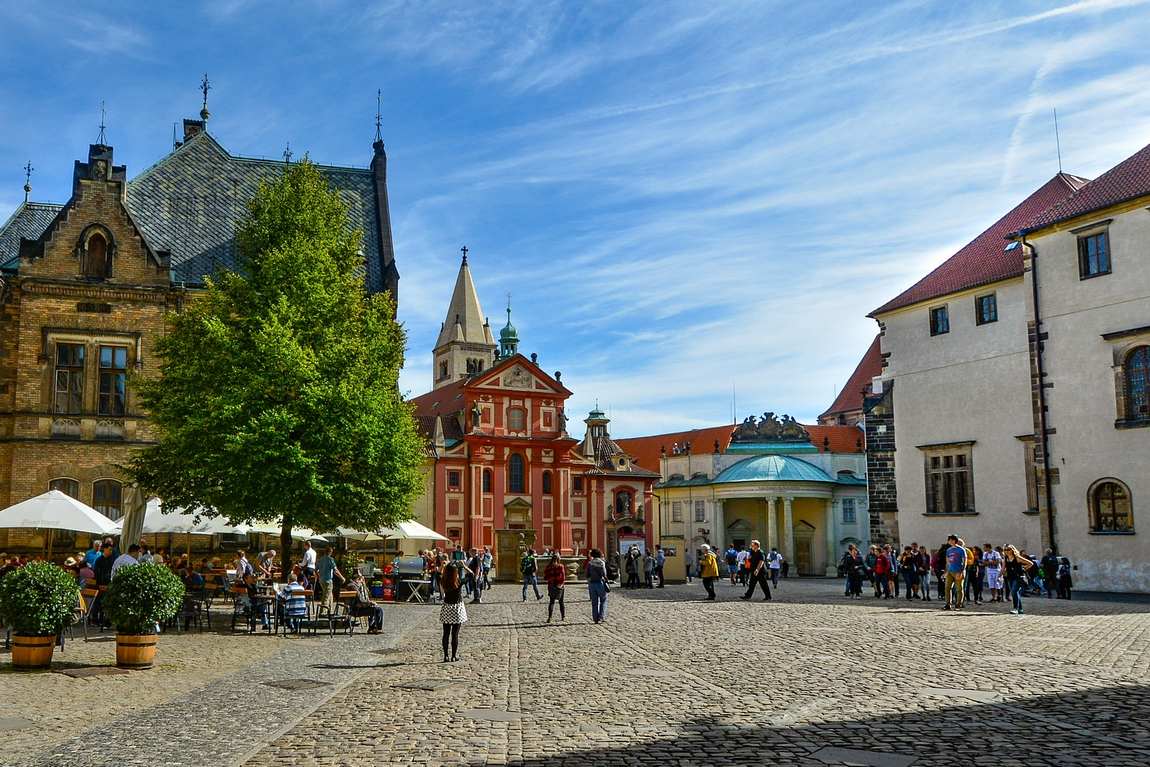 Photo: pixabay.com
Photo: pixabay.com
Why is St George Basilica so Famous?
This church in Prague holds a revered place in the heart of Prague, telling tales as old as time through its ancient walls. This 10th-century church is renowned for its beautiful mix of Baroque, Romanesque, and Bohemian architectural styles, offering families a mesmerizing window into historical artistry.
- Architectural Majesty: With Romanesque arches that soar towards the heavens and a Baroque facade that captivates the eye, the Basilica is a testament to Prague's rich cultural heritage.
- Historical Significance: As the oldest church within the Prague Castle complex, it has withstood time, including a devastating fire in the 12th century that led to significant reconstruction.
The interior is a symphony of stone and light, with church windows casting ethereal patterns across the nave, illuminating the Romanesque architecture that families can marvel at. It's not just a church; it's a chronicle of the ages, where every stone has a story, every corner, a forgotten dialogue.
One cannot help but be impressed by the landmark's resilience and how it has maintained its original Romanesque style, surviving throughout the centuries. For families exploring Prague, the Church is not just a destination but an experience. In this place, history is palpable, and memories are made amidst the echoes of the past.
It is a pinnacle of tranquility in the bustling city, a site of learning, and an enduring emblem of the spirit of Prague.To summarize, this building is a must-visit for history and architecture lovers.
Why It Might Be Interesting for Kids
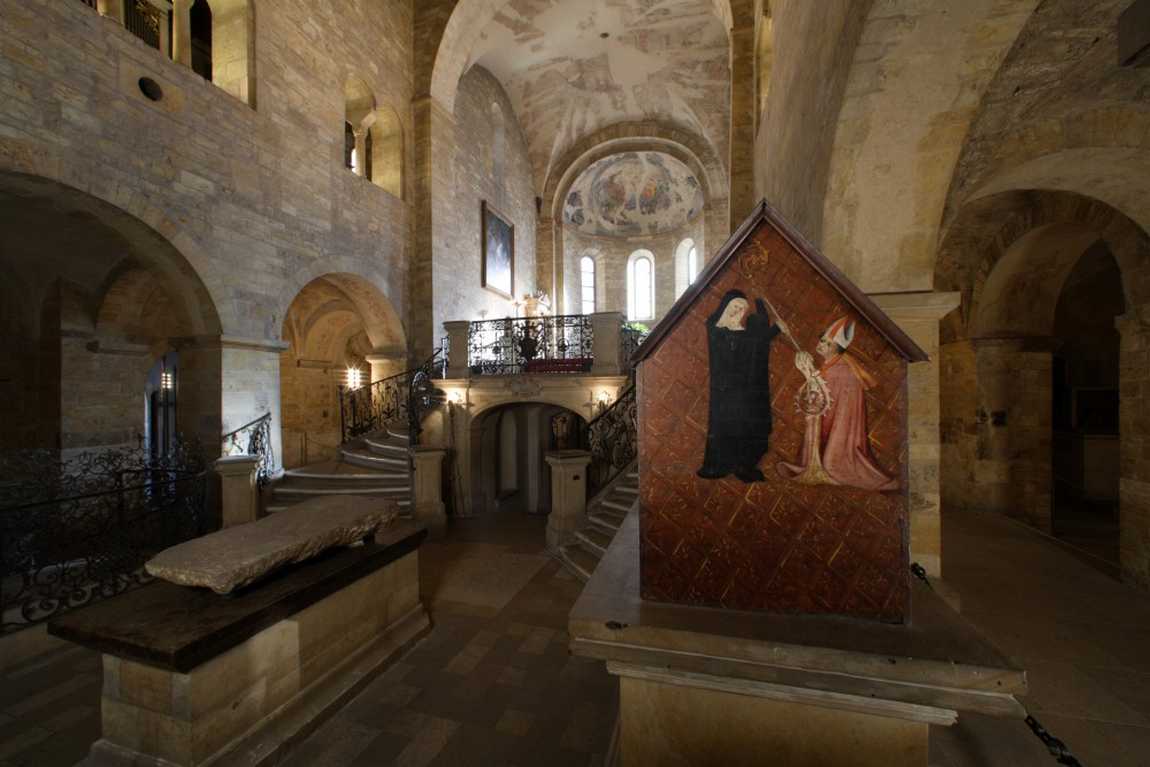 Photo:https://www.hrad.cz/
Photo:https://www.hrad.cz/
Visit here to get an enchanting experience for children of all ages. It's not just a journey through history but an adventure into the heart of Gothic and Baroque beauty.
- Architectural Marvel: This landmark is a treasure trove of architectural styles. With Romanesque roots and Baroque flair, its diverse designs capture the imaginations of young visitors.
- Mythical Tales: The stories of Saint George slaying the dragon are sure to fascinate youngsters, who can envision the valiant tales amidst the historic walls.
- Artistic Exploration: With an array of intriguing frescoes and statues, the interior of St George's provides a visual feast for creative kids.
Children aged 6-12 are particularly likely to find the Basilica exciting as they can appreciate the vibrant stories and art while grasping some historical significance. It's a splendid way to introduce them to cultural heritage in an accessible and captivating manner.
Old Royal Palace and Golden Lane are within walking distance. Include these sites in your itinerary too.
Some interesting facts about the Basilica of St George
 Photo:pragueclassicconcerts.cz
Photo:pragueclassicconcerts.cz
Nestled within the historic Prague Castle complex, St. George's Basilica is a testament to medieval architecture and Bohemian history. Families visiting Prague often marvel at its striking façade, and the stories etched into its ancient stones.
- A Tenth-Century Foundation: The Basilica is one of the oldest surviving churches in Prague, with origins dating back to the 920s. It witnesses centuries of turbulent and transformative events in Prague's past.
- Romanesque Resilience: Visitors are captivated by its Romanesque architecture, which has withstood the test of time. The Basilica displays characteristic features such as thick walls, round arches, and robust pillars, inviting families to return to the Middle Ages.
- Dynastic Tombs: Until 1055, the Church was the final resting place of members of the Premyslid dynasty. For example, the Basilica is home to the tomb of Saint Ludmila of Bohemia, the grandmother of St. Wenceslas. Kids are often fascinated by learning about the Czech princes and princesses whose stories are integral to the Basilica's legacy.
- Artistic Restoration: After suffering damage in the Thirty Years War, the building underwent significant renovations. The 19th century witnessed a revival of its interior, aiming to reestablish the church’s former glory.
- From Sacred to Secure: The adjacent convent, once part of the basilicás religious life, was deconsecrated and now houses part of the National Gallery, bringing a touch of modernity to the age-old structure.
The Basilica of St George is more than just a religious site; it's a chapter of Czech history that brings joy to those of all ages. Its tales of the past and architectural beauty make it a staple in any family trip to Prague.
Historical Background
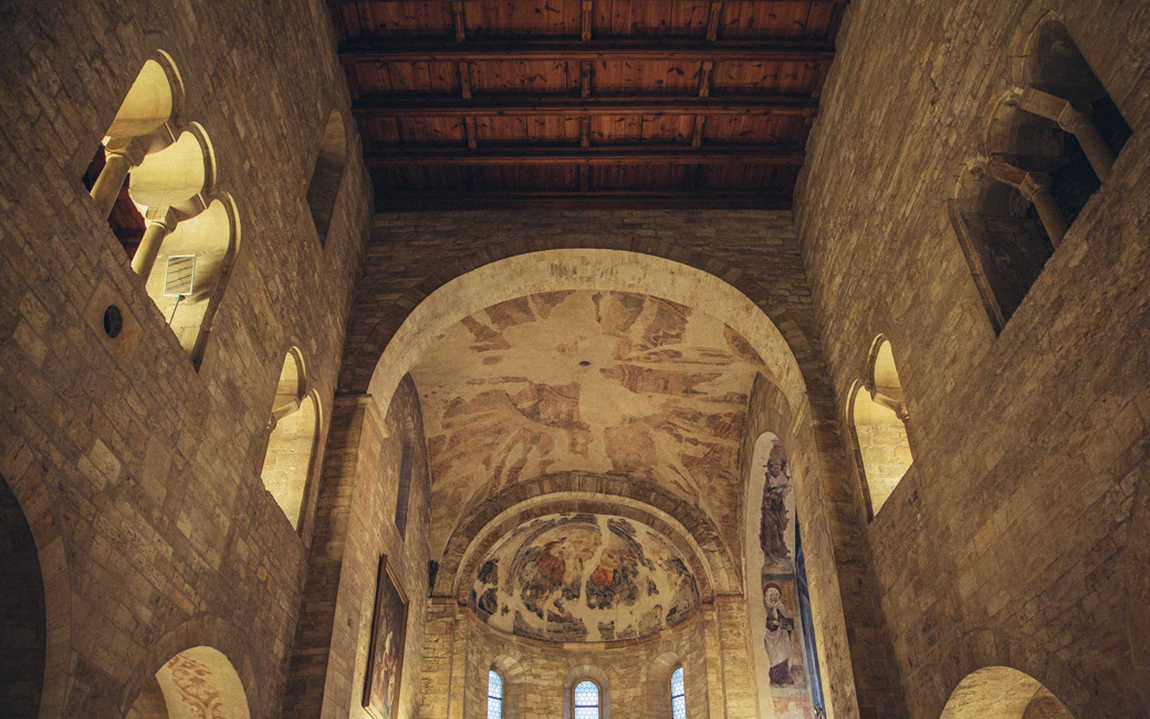 Photo: pragueclassicconcerts.cz
Photo: pragueclassicconcerts.cz
This Church is a testimony to the rich tapestry of history that has unfolded in the heart of Bohemia. From its 10th-century origins to its role today, this monument has witnessed centuries of change, echoing the architectural and cultural shifts of the ages.
Founding and Romanesque Origins
The foundation of St. George's Basilica at Prague Castle dates back to around 920 AD, initiated by Prince Vratislav I of the Premyslid Dynasty. Constructed within the Prague Castle complex, this historic church is distinguished by its Romanesque architecture. It retains the original foundations that underscore its longstanding presence in the region. Its role within the Bohemian milieu was significant, not merely as a place of worship but also as a reflection of the period's architectural aspirations.
Gothic and Baroque Transformations
Through the centuries, St. George's Basilica has undergone multiple transformations. The fire in 1142 was a considerable event that led to significant reconstruction work. It was rebuilt with its iconic central apse and two steeples using all original materials that could be saved from the wreckage. In the Gothic period, the church saw enhancements that enriched its historical texture. The arrival of the Early Baroque period brought a sweeping overhaul, with architect F.M. Kanka leading a significant reconstruction during the Baroque period. He added the Baroque Chapel of St. John Nepomuk.
During 1887 - 1908, it underwent reconstruction according to the design of František Mach, who tried to renew the original Romanesque appearance. Today's facade results from these transformations, encapsulating layers of history within its structure.
Preservation and Modern Significance
Recognized as a National Cultural Monument, this Romanesque church is a treasured piece of Prague's heritage, maintained for posterity. For modern-day visitors, the church offers more than just guided tours; it's a portal to the past, with its walls and frescoes narrating stories of a bygone era. Accessible by public transport, families venturing to Prague can immerse themselves in its grandeur. A stroll through the on-site photo gallery provides an intimate glimpse into the Basilica's continued relevance to history aficionados and casual observers.
Architectural Features
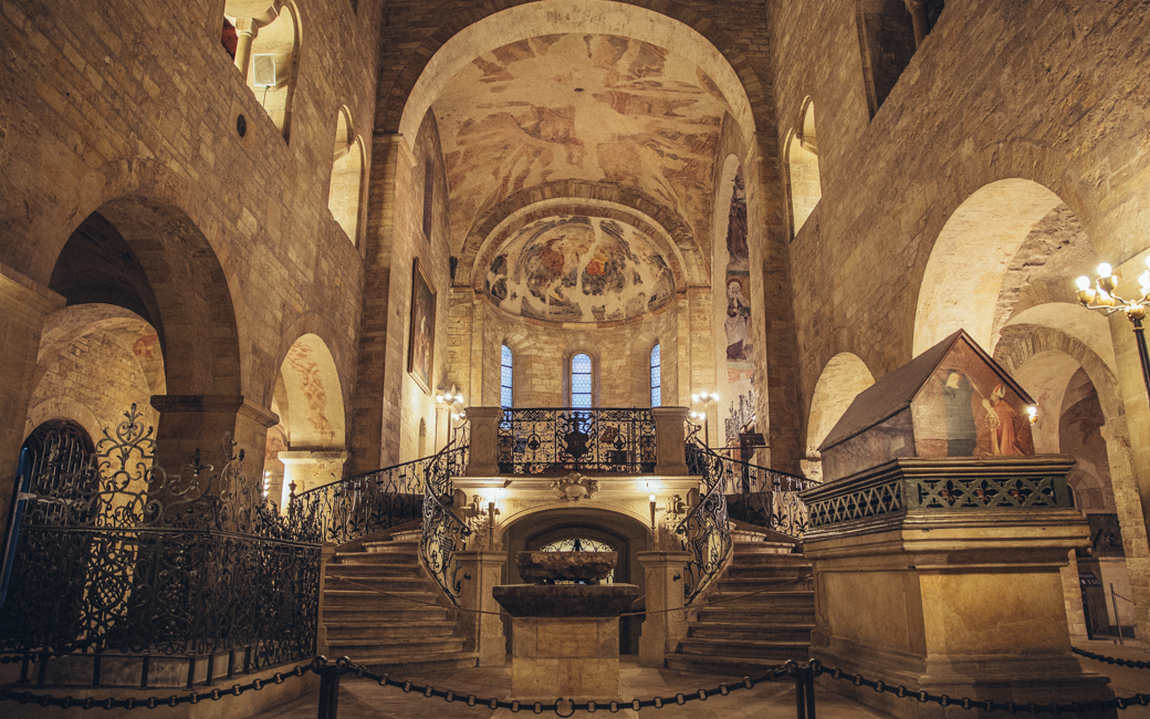 Photo:pragueclassicconcerts.cz
Photo:pragueclassicconcerts.cz
St. George's Basilica showcases a mesmerizing blend of architectural styles that testify to its historical significance and evolving design. Families visiting Prague Castle, especially those interested in history and architecture, will find the Basilica a fascinating mosaic of eras embodied in stone and artistry.
Romanesque and Gothic Elements
At the heart of St. George's Basilica, the Romanesque-style windows pierce through the sturdy walls, casting ethereal light onto the hauntingly beautiful crypt below. This feature captures the essence of the 10th-century church, an era where the Romanesque was the predominant architectural style across Europe. The crypt is a silent witness to the centuries, offering families a glimpse into Prague's spiritual history.
Gothic elements can be seen as an evolving narrative in the church's aesthetic, joining the solid, rounded arches with the soaring verticality typical of Gothic design. Its Gothic aspects are subtle clues to its ongoing story, told in modifications and expansions that span centuries.
Baroque Facade and Interior
In stark contrast to its early medieval roots, the church is adorned with a Baroque facade that demands attention and serves as a grand welcome to families exploring the site. Introduced in the 17th century, its striking red facade is a visual spectacle, drawing visitors into the church's equally rich Baroque interior.
The interior is marked by exquisite Baroque chapels, including the renowned Chapel of St. John of Nepomuk, adorned with art and symbols of the sanctity and history it represents. Children may be fascinated by the elaborate designs and the stories depicted within the chapels' frescoes, providing a visual feast that narrates tales of saints and patrons.
This historical gem also features a charming Baroque portico, an inviting entrance flanked by artistic sculptures and embellishments that speak volumes of the era's exquisite style and the skill of its architects. Its Baroque elements create a warm and lavish atmosphere that envelops families in the rich tapestry of Prague's architectural heritage.
Religious and Cultural Importance
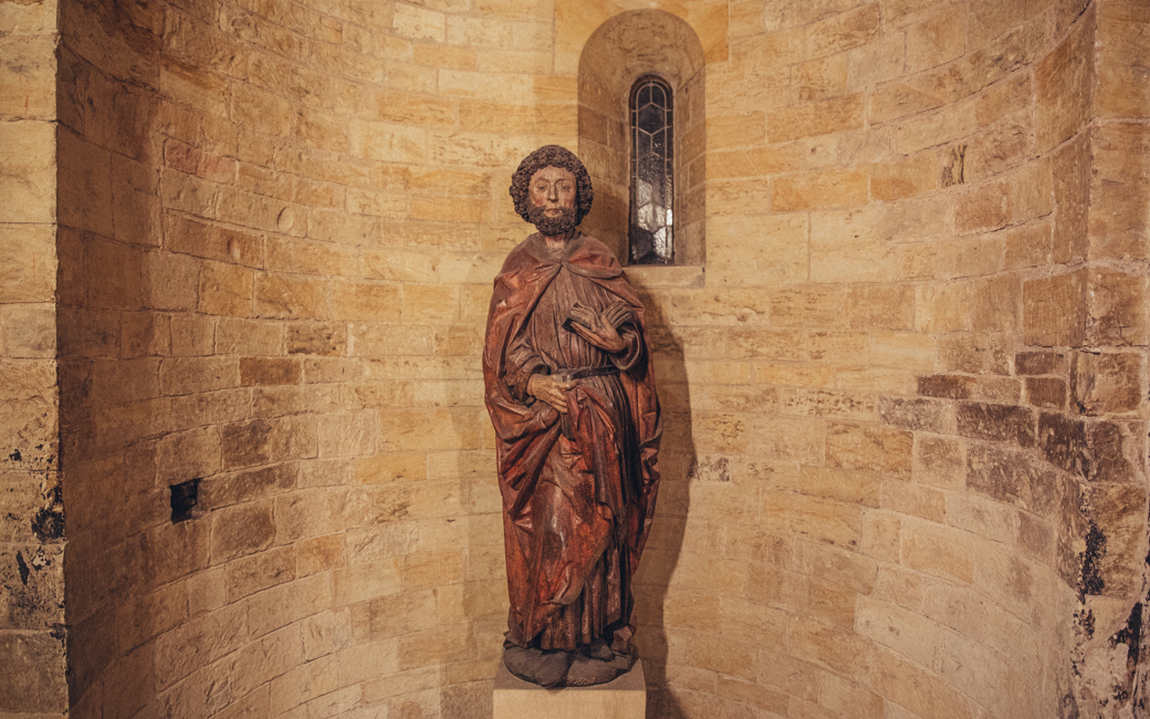 Photo:pragueclassicconcerts.cz
Photo:pragueclassicconcerts.cz
St. George's Basilica is prestigious in Prague's history as a charming amalgamation of religious significance and cultural heritage. This ancient church serves as an architectural treasure and a silent witness to the rich tapestry of stories woven around Czech patron saints and nobility.
Home to Benedictine Nuns
Established in the 10th century, St. George's Convent, adjacent to the Church, was once a vibrant community of Benedictine nuns. Throughout the centuries, the convent served as a place of deep spirituality and learning, anchored by the patronage of influential female saints. Notably, St. Ludmila, the grandmother of St. Wenceslas, is intimately connected to this religious site, exemplified by the dedicated Chapel of St. Ludmila, a space revered for its historical and holy significance.
Chapels and Patron Saints
Within the Basilica's sturdy Romanesque walls lie several chapels, each a hub of devotion dedicated to various saints. The Chapel of St. John of Nepomuk stands out, paying homage to the life of the Czech martyr revered for his piety and fidelity. Additionally, the Baroque Chapel offers a striking contrast with its ornate design, a testament to the evolving art styles that have left their mark on the church's interior.
The Basilica's dedication to Saint George is central to its standing in Prague's cultural canon, symbolically tying the present community with the legends of past protectors and guardians of the Kingdom of Bohemia.
Art and Exhibitions
St. George's Basilica, a historical gem nestled within the Prague Castle complex, is a venue where art and history intertwine beautifully. Not only does it stand as an architectural marvel, but it also serves as a prominent exhibition space for the National Gallery. Here, visitors can immerse themselves in a showcase of Czech artistry set against the backdrop of the Basilica's aesthetic splendor.
National Gallery Exhibits
Within St. George's Basilica, the National Gallery in Prague curates compelling exhibitions tailored to art enthusiasts of all ages. Seasonal exhibits feature works from medieval to modern art, providing families with an engaging cultural journey. Patrons might find the ambiance of the Basilica transformed into a concert hall, enhancing the viewing experience with occasional classical concerts and adding an auditory layer to the visual feast.
Frescos and Artwork
The interior of St. George's Basilica is adorned with well-preserved frescoes. These vibrant wall paintings provide a visual narrative of religious tales and historical accounts, inviting viewers of all ages into ancient worlds. Visitors observe these timeless pieces, reflecting Romanesque roots and later Gothic modifications, offering an insight into the artistic evolution over centuries. For those exploring Prague using public transport, the convenient Tram No. 22 or Metro Line A will bring them directly to this art and history treasure trove.
Best Time to Visit
Visiting St. George's Basilica with family calls for timing that accommodates comfort and the enriching experience the historic site offers. The ideal time to visit St. George's Basilica with children spans from April to May and from September to October, when Prague welcomes a pleasantly mild climate, less crowded attractions, and the lush beauty of its spring and autumn seasons.
During these months, families can enjoy the Basilica's architectural splendor without the discomfort of peak summer heat or winter's chill. It's important to note that visiting early in the day, ideally right at opening time, often ensures a quieter exploration with kids, allowing families to appreciate the serenity and the centuries-old Romanesque interiors in a more intimate setting.
For weekdays, Tuesday through Thursday mornings are remarkably advisable. These days typically see fewer visitors, resulting in a more relaxed visit. Weekend afternoons should be avoided, as they are the most crowded.
When planning a visit, families should check the official Prague Castle website for current opening hours and any scheduled events that might affect visitor traffic. Additionally, it's always a wise choice to review the local Prague school calendar, as school holidays often lead to an increase in local family visits to popular attractions like St. George's Basilica.
How Long Does It Take to Visit St. George's Basilica?
 Photo:pragueclassicconcerts.cz
Photo:pragueclassicconcerts.cz
Visiting this spot in Prague can be a highlight of any family trip, captivating adults and children with its historical charm. A well-paced visit typically lasts 30 to 60 minutes, allowing visitors to appreciate the Basilica's architecture and serene ambiance without overwhelming the little ones.
Estimated Duration:
- Self-guided tour: Approximately 30 minutes
- Guided tour: Can extend up to 1 hour
Suggested Itinerary:
- Main Nave and Altar: Allocate 10-15 minutes to admire the Romanesque architecture and the intricate art pieces.
- Tombs of Bohemian Kings: Spend around 5-10 minutes here, where history comes alive for the family.
- Convent Exhibition: If part of your ticket, visiting the adjoining exhibit can add 15-20 minutes.
Timing Tips:
- Early Mornings or Late Afternoons: These are the best times to visit when the site is less crowded.
- Skip-the-Line Tickets: These save time, especially during peak tourist seasons.
Families should note that the time spent can vary depending on interest level. It's helpful to visit the official website for the latest opening hours and ticket availability information to better plan their visit. Furthermore, combining the Basilica with other attractions in Prague Castle can offer an enlightening full-day experience.
Is St George's Basilica Worth Visiting?
St. George's Basilica is a captivating destination for families touring Prague. Its origins date back to the 10th century, making it the oldest surviving church building within Prague Castle. For those intrigued by history, the rich past of this building is an undeniable draw. Its Romanesque architecture is complemented by Gothic and Baroque modifications, which tell a story of the centuries it has survived.
St. George's Basilica is worth visiting with kids. The highlights for a family visit include exploring the colorful frescoes that date back to the 12th century and the tomb of St. Ludmila, an essential figure for Czech Christians. Additionally, the church windows create a serene, mystical, and inviting atmosphere, especially when they light up the Romanesque arches. It is an excellent educational opportunity for children to grasp different architectural styles through the ages visually.
It holds regular classical concerts for those who love music. These events make for a memorable evening combining cultural immersion with auditory pleasure, suitable for all ages.
The oldest church building within the Prague Castle complex is worth visiting for its historical significance, architectural beauty, educational value, and cultural experiences. It enables families to step back and enrich their understanding of Prague's history while creating lasting memories.
St. George's Basilica is accessible with a valid ticket, which can be included in a small or big circuit tour of Prague Castle.
Visiting St. George's Basilica offers a tranquil yet educational outing for the whole family amidst the bustling city of Prague.




